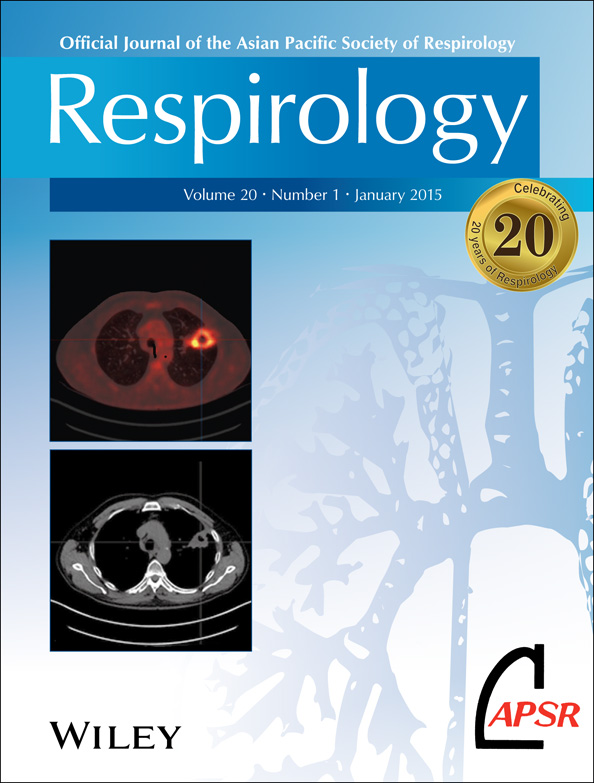Diagnostic role of inflammatory and anti-inflammatory cytokines and effector molecules of cytotoxic T lymphocytes in tuberculous pleural effusion
Abstract
Background and objective
Early diagnosis of tuberculous pleural effusion (TPE) remains difficult. While some inflammatory markers in pleural effusion (PE) are helpful in diagnosis, the roles of anti-inflammatory cytokines and effector molecules of cytotoxic T lymphocytes have not been investigated.
Methods
Lymphocyte-predominant exudative PE samples were assayed for inflammatory and anti-inflammatory cytokines and effector molecules of cytotoxic T lymphocytes. Logistic regression analysis was used to predict the probability of TPE and identify independently associated factors. Receiver operating characteristic (ROC) curve analysis was applied to determine the optimal cut-off value for the predicted probability.
Results
Of 95 patients enrolled, 35 had TPE, 46 had malignant PE and 14 had PE due to other aetiologies. Interferon-γ (IFN-γ), adenosine deaminase (ADA), decoy receptor (DcR) 3, monocyte chemo-attractant protein (MCP)-1, IFN-induced protein (IP)-10, granzyme A and perforin were higher in TPE than in PE of other aetiologies. By logistic regression analysis, IFN-γ ≥ 75 pg/mL, ADA ≥ 40 IU/mL, DcR3 ≥ 9.3 ng/mL and soluble tumour necrosis factor receptor 1 (TNF-sR1) ≥ 3.2 ng/mL were independent factors associated with TPE. The predicted probability based on the four predictors had an area under the ROC curve of 0.920, with 82.9% sensitivity and 86.7% specificity under the cut-off value of 0.303. In the TPE group, patients with positive PE/pleural culture for Mycobacterium tuberculosis had higher pleural IFN-γ, MCP-1, IP-10 and perforin than those with positive sputum but negative PE culture.
Conclusions
While pleural interferon-γ and ADA are conventional markers for diagnosing TPE, simultaneous measurements of DcR3 and TNF-sR1 can improve the diagnostic efficacy.




